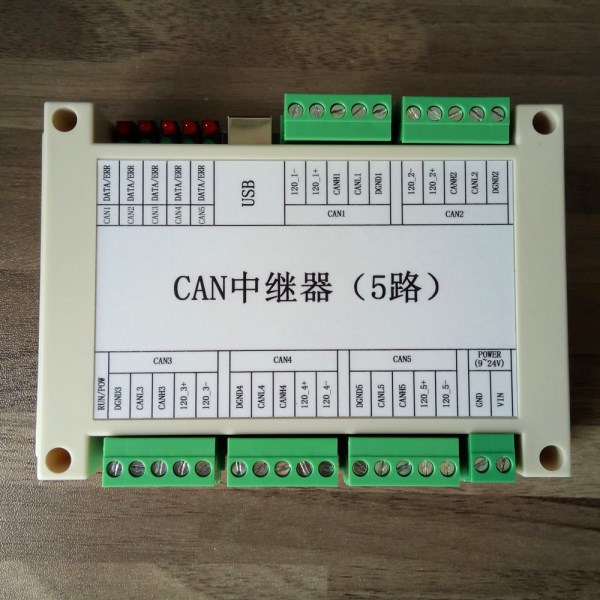Condition:New
Type:Logic ICs
Functional Overview
CAN Bridge is an intelligent repeater. The use of CAN bridges to interconnect the devices overcomes the physical limitations of the number of CAN bus nodes and the communication distance, and can effectively expand the total number of CAN network nodes and extend the communication distance.
In a CAN bus network, the bridge can receive signals from one cable, amplify them, and send them to the next cable. Therefore, it can not only extend the communication distance or range of the CAN network, but also improve the performance, reliability and safety of the CAN network.
The store and forward function of the CAN bridge can make it suitable for connecting two CAN networks with different CAN baud rates. Therefore, it forms a hybrid network that matches CAN networks of different speeds and is connected together.
CAN bridge is a store-and-forward device that connects two CAN networks. It can provide intelligent connection services. It can selectively receive and forward according to the ID filtering of the message frame. After network 1 and network 2 are connected through a bridge, the bridge receives the data packet sent by network 1, and checks the frame information in the data packet. If the frame information does not meet the requirements of network 1, it will discard it. On the contrary, if it meets network 1 If the information is requested and required by Network 2, it will continue to be sent to Network 2. In this way, the CAN network bridge can be used to isolate information, isolate the information that does not meet the network requirements from the bus, and prevent invalid information from occupying bus resources.
Using a CAN bridge to divide a larger CAN network into several segments is beneficial to improve the reliability, availability and security of the network.
As a transparent network bridge, the biggest advantage of CAN bridge is that it is easy to install and easy to use. It is a plug-and-play device. Using the CAN bridge, there is no need to change the existing hardware and software, no need to change the existing network parameters, just plug in the cable, and it has no effect on the operation of the existing CAN network.
Performance and technical indicators
● 5 independent CAN channels, all CAN channels adopt photoelectric isolation, TVS surge protection
● Support CAN2.0A and CAN2.0B protocol, support standard frame and extended frame format;
● Support USB communication parameter configuration, 5 CAN channels can be independently configured with baud rate: 5Kbps-1000Kbps;
● Support custom acceptance filter or choose not to filter;
● Working power supply: +9V~+24V DC;
● Support standard DIN rail installation;
● Product size: 145mm*90mm*43mm (not counting the height of the rail mounting frame).
Typical application
1) When multiple CAN networks with different baud rates need to be connected, the CAN network bridge can be used to independently configure the function of multiple CAN channel baud rates to realize the connection.
2) When the devices communicate with each other through the CAN bus, but the communication distance exceeds the distance limit of the CAN bus, use the relay function of the CAN bridge to amplify the signal and maintain the stability and safety of the CAN network.
3) The CAN bus has a large amount of data, and when it is necessary to selectively receive CAN information, use the CAN bridge to filter and shield.
4) When the number of network nodes is relatively large, expand the network nodes.


